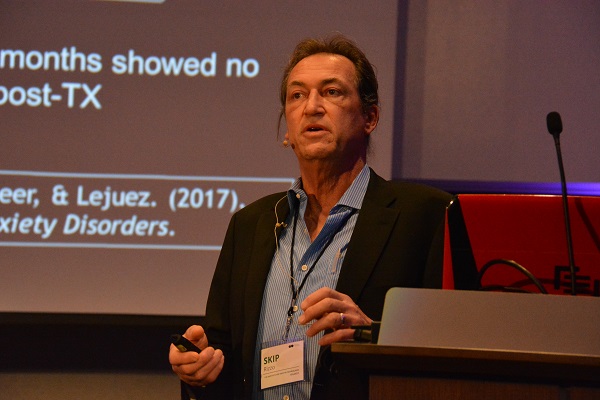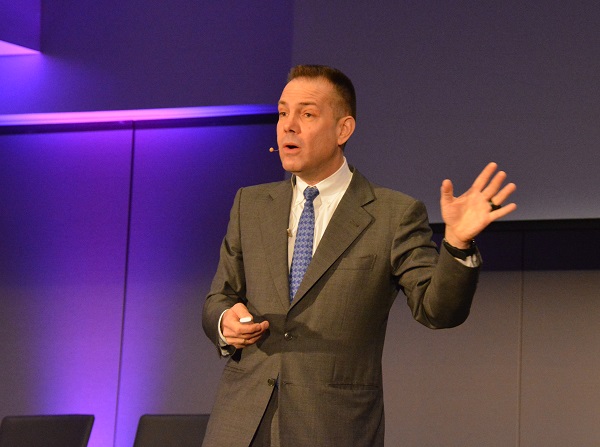by Dot Cannon
As Cedars-Sinai’s inaugural “Virtual Medicine” conference concluded, organizer Dr. Brennan Spiegel faced a very enviable dilemma.
From its starting moments on Wednesday, March 28th in Los Angeles, the conference had shone. New ideas about the use of virtual reality in healing, and speakers who used professionalism, caring and creativity to bring them to life, were a part of every session of the conference, which was themed, “Best Practices in Medical Virtual Reality”.
And now, in one of the final sessions on Thursday, March 29th, Dr. Spiegel would summarize the “Top Ten Takeaways From the Conference”.
We still don’t know how in the world he was able to choose.
Throughout both days of the two-day conference, every session could easily have been described as starting at “excellent” and progressing from there. Medical professionals, patients and community members had all shared their insights, new ideas and experiences. And although the conference was sold out, viewers were able to watch it, live-streamed in virtual reality!
At the start of Day Two, Dr. Spiegel told the audience that 700 people had watched Day One virtually.
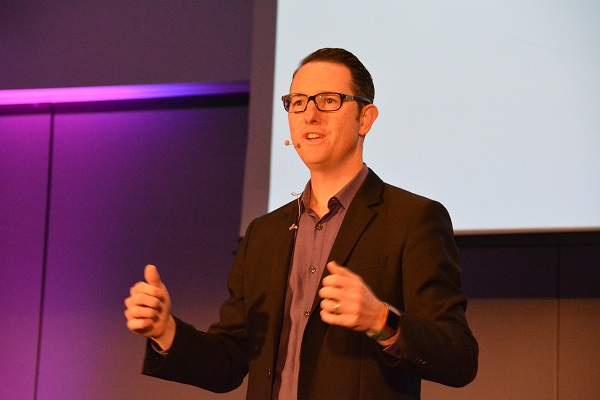
“I understand there was a hotspot in Saudi Arabia. ..Who knew?” he commented.
Dr. Spiegel, who is both Cedars-Sinai Health System’s Director of Health Services Research and the Director and Founder of Virtual Medicine, previewed some exciting directions for medical VR during his summary. His speech, and the conference itself, had focused on caring for the patients as individuals.
“(This has been about) really, truly listening to the user and (creating) tailored guidance, and I’ve loved that a lot,” he said at one point.
While the audience, over the two days, had heard speakers on the use of VR for everything from pain management to PTSD and preventive care, Dr. Spiegel was quick to point out that virtual reality is not a panacea.
“It’s important not to overpromise what VR can achieve for the opioid epidemic,” he said. “VR is not going to cure this epidemic.”
In the area of summarization, we’ll never be able to do as well as he did. But in addition to the aforementioned focus on customized medicine, here are some of our favorite parts of Day Two of Cedars-Sinai’s first-ever “Virtual Medicine” conference.
VR: Opening doors and healing
Psychologist Dr. Skip Rizzo, USC Institute for Creative Technologies’ Associate Director for Medical Virtual Reality, referenced an exciting “first”, during his presentation. Virtual reality, he said,, “enabled a girl with cerebral palsy to play a game for the first time in her life”!
Dr. Rizzo, who won the American Psychological Association’s 2010 Award for Outstanding Contributions to the Treatment of Trauma, for his work with virtual reality-based exposure therapy to treat PTSD, works with VR in numerous other areas. His work has included developing VR game-based systems to assist in post-stroke rehabilitation.
“We know VR meets the needs of good rehab,” he commented. “We’re actually working a lot with the Leap Motion sensor, where your hands…can interact with digital content.”
VR could also be used for classroom cognitive assessment, Dr. Rizzo explained. By creating a virtual classroom for students with ADD, researchers were able to track head motion and notice when they’re no longer focused on the “board”. Although USC Institute had had their virtual reality lab since 1996, he said, the cost of using it had been prohibitive until recently.
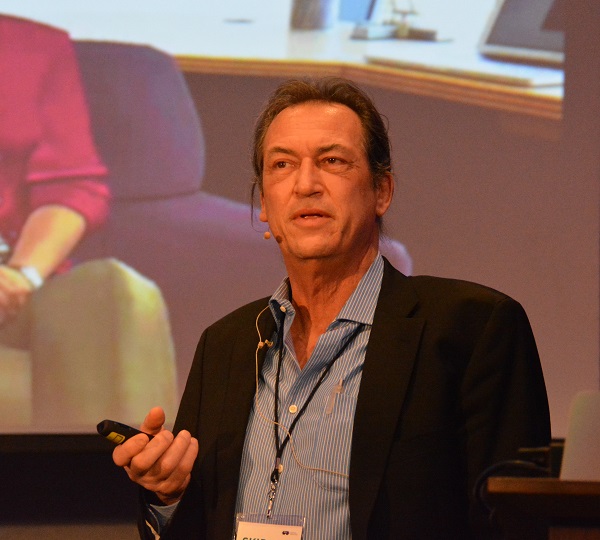
“Everybody loved it (in the 1990s), but when we asked, ‘would you spend $8,000 to $10,000 to use it in the classroom, (they couldn’t).”
Another area in which he’s working is the creation of “virtual humans” with artificial intelligence.
Creating a virtual patient, Dr. Rizzo said, “gives novice commissions a chance to screw up with a virtual patient, before they get their hands on a real one.” A second use, he added, was the creation of a virtual coach, to which PTSD-afflicted patients could speak anonymously.
He also discussed Bravemind, a medical virtual-reality tool for treating military PTSD. Bravemind, he said, had 14 different scenarios, based on the Afghanistan war.
“In (our) very first trial (after using Bravemind), 16 of the (group of 20 patients using it) no longer had PTSD,” Dr. Rizzo said.
And Dr. Rizzo concluded his preentation by sharing the story of introducing his 83-year-old mother to virtual reality! The audience seemed delighted to hear of her amazement, at experiencing her first VR scenario.
“Evangelizing” VR
“As a surgeon, my passion is my patients,” said healthcare futurist and TEDX speaker Dr. Rafael Grossman. “But I also have a responsibility to be an evangelist of sorts.”
His evangelistic topic? The need to incorporate virtual reality into surgery. Dr. Grossman was the first doctor to ever use Google Glass during live surgery, according to the Virtual Medicine conference program
“Healthcare is a human right,” he commented. “But healthcare is really in trouble, because we have lost the human connection, and I think technology can make a difference.”
That difference, he continued, comes from accessibility.
“The first holographic surgery was done in France, not too long ago,” he said. “They can do the (holographic) imaging with your phone. And that democratizes (the information).”
In addition, Dr. Grossman said, virtual reality could be an invaluable learning tool for new surgeons. A holographic rendering of a patient’s anatomy now allows a “dress rehearsal” of an upcoming surgery.
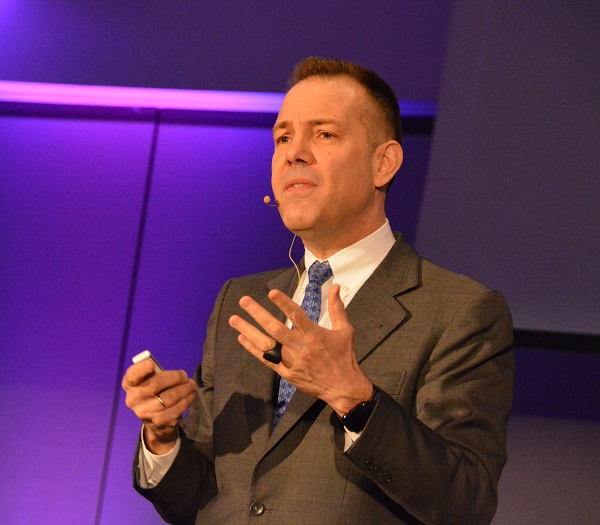
“We have incredible power (to improve on the old surgical saying, ‘see one, do one, teach one’),” he commented. “(VR allows us to perfect the process) before we go to the real patient.”
Yet another way VR could improve healthcare, Dr. Grossman said, was by facilitating collaboration of medical professionals.
“This is public healthcare in (my native country) Venezuela,” he explained, showing patients crowded onto dirty stretchers in a filthy facility. But a telepresence platform called Thrive, he said, could be one of the ways to change those conditions.
Thrive brings avatars into one common meeting space. Those avatars can represent medical professionals from around the globe, and can interact with one another onscreen, very much as if the users were in a multiplayer online game.
“Man, I got chills!” commented Dr. Spiegel, after the presentation.
Breaking new ground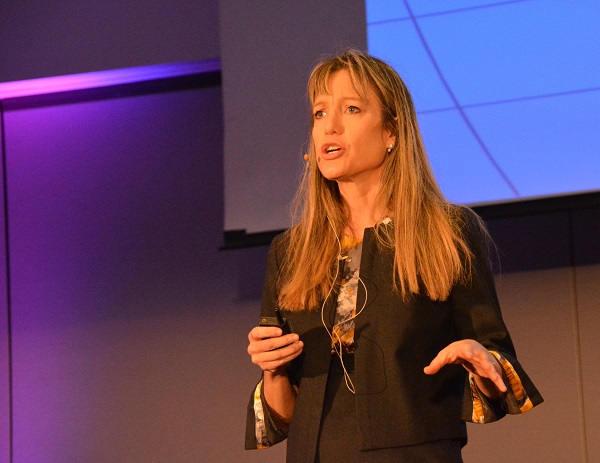
“I work with a very prestigious group of researchers. They knew nothing about all this evidence for VR,” commented Stanford Neuroscience’s Institute’s Dr. Kim Bullock. Dr. Bullock is the Founder and Director of Stanford’s Neurobehavioral and Virtual Reality Clinics and Laboratories.
Dr. Bullock said she first implemented VR after hearing about its use for physical therapy. So she began experimenting with neuroscientist V.S. Ramachandran’s mirror-box therapy for phantom limb pain.
However, she was pioneering a new area: virtual reality for the treatment of functional neurological disorder.
“Movement and sensation and pain are directly linked in the brain,” Dr. Bullock said. “It’s like the software feedback loop. Once you start moving, (your brain) dials down the pain.
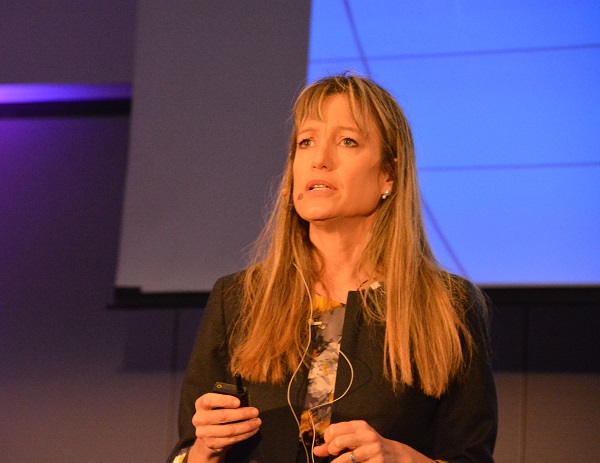
“Mirror therapy actually causes plasticity in the brain to occur. A perceptual illusion can change your brain. That’s fascinating to me.”
At the time of the conference, Dr. Bullock explained, her group was halfway through a randomized control trial.
“We only had one episode of an adverse event,” she said. “I want to remain agnostic. This may not work at all on these folks, and I’m open to that.”
And her exploration in the new area of medical virtual reality had just begun.
“One thing I realized, we can’t do this alone,” she said. “The technology is moving so fast, we cannot innovate without each other. So…once a month, we meet and the developers come in and exhibit their (new) software.’
A natural connection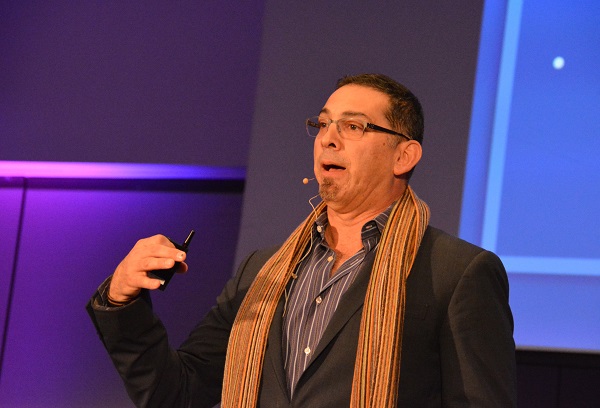
“It’s like fish to water. VR is just natural to kids,” said Dr. Jeffrey Gold.
Dr. Gold, a licensed clinical psychologist, is the director of both the Children’s Outcomes, Research and Evaluation Program and the Director of the Pediatric Pain Management Clinic at Children’s Hospital Los Angeles.
“How many people like having blood drawn?” he asked. “Show of hands? None.” The audience laughed.
While blood drawing, cast removal and IV placement could make a hospital a “scary place” for young patients, Dr. Gold said, VR had been instrumental in calming their anxiety.
“We’ve looked at 150 kids coming through for blood draw,” he said.
But the key, he added, was their individuality. “‘Bear Blast’ was a game we developed. (But) an eight-year-old girl doesn’t want the same simulation as a six-year-old boy.”
“Over time, this community is going to build that library (of customized games and simulations) and it’s going to be very exciting. Customizing the VR environment to a child is important. But (also important is), who’s the right kid?”
Virtual reality in the community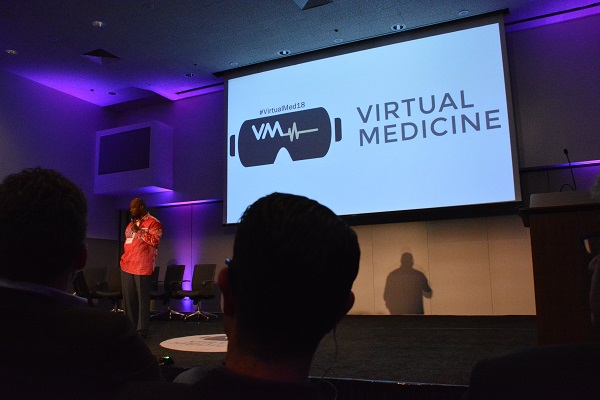
A highlight of the Day Two program, prior to the lunch break, featured Cedars-Sinai’s Dr. Bernice Coleman and Reverend Kevin Sauls, pastor of Holman United Methodist Church in Los Angeles.
Their session, “So-HELP” Me God: How VR Helped Reduce Blood Pressure in the Holman United Methodist Church“, explored the ways the church community had used virtual-reality technology to improve members’ health. “So-HELP” is an acronym for The Sodium Healthy Living Project, a VR-supported project which Dr. Coleman headed with the goal of reducing parishioners’ blood pressure.
Reverend Sauls explained that he had involved his congregation in the program with the goal of serving them in both the areas of spiritual and physical health.
“That’s really what it boils down to for me. Anything I can do, as a person of faith, that enables (people to embrace a healthy future),” he said.
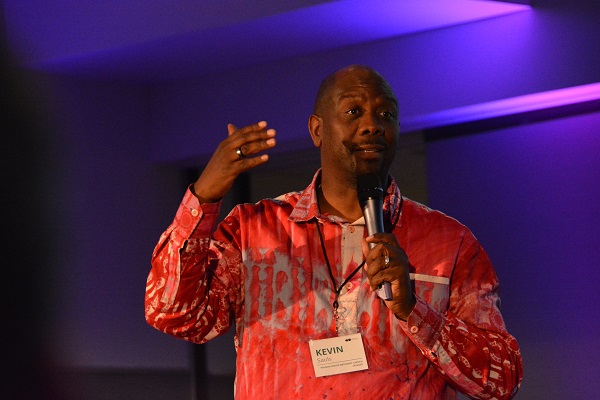
“We used to have a partnership with Cedars. I asked what happened to it..and within a week, that partnership was (re-established).”
From there, he worked with both Dr. Spiegel and Dr. Coleman, who is also an RN, to improve his parishioners’ health. Specifically, the project aimed at lowering congregants’ blood pressure–which according to a slide Dr. Coleman presented, is the highest cardiovascular health risk to African-Americans in the United States.
“For 12 to 14 weeks, we had around 45 to 50 individuals signed up,” Reverend Sauls told the audience. “Men and women came together and designed (a plan) with Dr. Bernie, and they came up with a program called Hold the Salt.”
Both men and women participated in the program, he said. And that program included distributing Fitbit fitness trackers, monitoring blood pressure, hiring a cook to serve healthy alternatives to favorite foods–and showing participants virtual-reality simulations of the effects of high blood pressure inside their bodies.
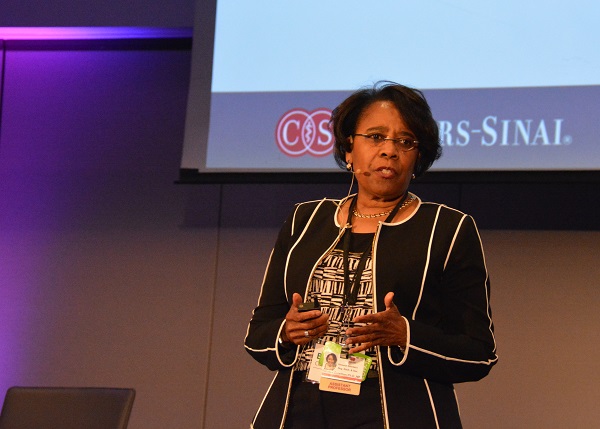
“We first assembled an expert panel, (in which the pastor, Cedars and all our experts participated),” said Dr. Coleman, who is the Associate Director for Nursing Research at Cedars-Sinai Medical Center.
But a community-based participative research project had two hurdles to overcome in an African-American church community: trust and respect.
“Everyone remembers Tuskegee,” Dr. Coleman commented. (Her reference is to the infamous study in which researchers failed to treat syphilis in hundreds of poor African-American men in Macon County from 1932 to 1972. Penicillin had become available to treat the disease in the 1940s.)
The So-HELP project, she said, began with a study. Her panel asked enrollees to name their favorite foods. After identifying twenty foods for women and twenty for the men, the group then met for weekly sessions. Together, they worked on behavior modification and stress management, along with nutrition and exercise. During Week Six, participants’ phones were equipped with VR software to monitor changes.
“We gave (enrollees) a blood-pressure cuff, and a Fitbit,” Dr. Coleman explained. “The night the technology was given out, only three people in the room had ever heard of a Fitbit.”
And the sessions also included a cooking class.
“We also gave them a hot meal,” she said. “We hired a cook, took some of the favorite foods and changed them.”
But the backbone of the program was the congregation’s work as a community.
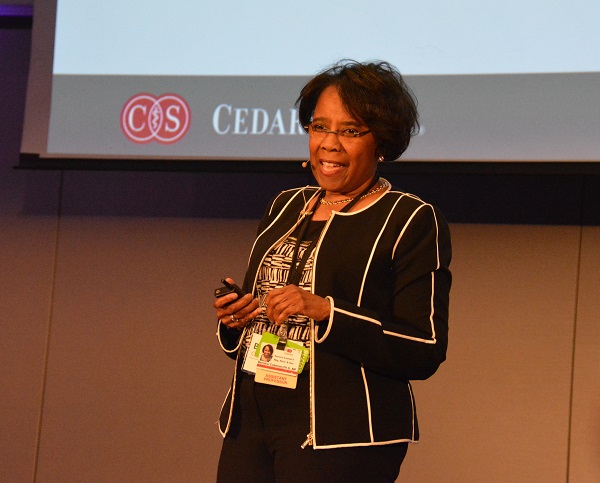
“They created (computer) wallpaper, taking their blood pressure twice a day,” Dr. Coleman explained. At the same time, she said, nurses called parishioners twice a week.
The community support had some dramatic effects.
“At Week One, people reported their stress (level was) pretty high, ” she said. “By Week Six, support was high…we were surprised with the blood-pressure drop.”
Dr, Coleman told the audience that her study participants experienced significant reductions in both their diastolic and systolic blood pressure, by the end of the study. Now, she was looking ahead to streamlining future such studies, with the lessons she and her group had learned.
“The use of technology on the phones was a little bit cumbersome for us…(On) our next study, we would allow (more) time, because we really slammed them with technology….And we’d keep the nurse calls, but decrease them to once a week.”
However, she continued, the project had achieved another critical goal, in addition to improving parishioners’ health.
“We can do this in the African community,” Dr. Coleman concluded. “Some of the cardinal points for success are trust, respect, (and) keeping your word. We did that.”

